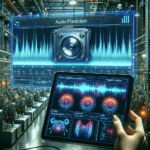AI is transforming industries with its ability to create new efficiencies. With a wide range of tools available, careful selection is necessary to ensure alignment with the task at hand.
As AI adoption accelerates across industries, we must ensure that the chosen AI tool aligns with our task objectives. Misalignment can result in underutilization of resources, sub-optimal outcomes, and, in some cases, counterproductive results.
Designing a Pathway for Effective AI Tool Selection
The field of AI offers a broad range of tools capable of processing and analyzing different data types, including text, image, audio, and video. The selection of an AI tool is contingent upon a clear understanding of the task objective and the nature of the data at hand. This alignment ensures efficient utilization of AI capabilities and paves the way for successful outcomes.
- Understanding task objectives: Defining the task objective involves identifying the problem to solve, understanding the desired outcome, and outlining the key performance indicators.
- Recognizing data types: Different AI tools are designed to handle different data types. Text-based data is best handled by Natural Language Processing (NLP) tools, images by computer vision algorithms, audio data by speech recognition and processing tools, and video data often requires a combination of computer vision and audio processing algorithms.
AI Tools for Prediction
AI tools for prediction tasks are designed to forecast future outcomes based on comprehensive, detailed information and present those projections in a digestible format without losing the subtleties. From predicting the impact of trends discussed in complex research articles to anticipating the next events in a long video, these tools employ advanced machine learning techniques to understand, interpret, and extrapolate data across various formats and domains.
Numeric input, numeric output: Traditional predictive models like linear regression, decision trees, or even time series models often struggle to understand complex temporal dynamics in data. Transformers, introduced in the “Attention is All You Need” paper, effectively model long-term dependencies in sequential data, making them highly valuable for predictions in time series data.
Text Prediction
AI methods like Transformers can predict numeric values using text as input. For example, they can predict house prices based on textual property descriptions in real estate listings.
Application: Numeric value prediction.
AI technologies, specifically Transformer models, analyze textual input to predict numeric outputs. This capability is utilized in various fields, such as real estate, for predicting house prices from property descriptions. The AI’s ability to comprehend and extract meaningful information from text enables accurate and useful predictions.
Image Prediction
AI can predict a numeric value when given an image, like predicting someone’s age based on their photo.
Application: Age prediction and other Numeric predictions from Images.
Utilizing advanced image recognition and processing, AI provides the ability to estimate numeric values from visual data. A typical application is age prediction based on facial features in photographs. This technology is grounded in the AI’s proficiency in deciphering and interpreting image content.
🛠️ Tools: Google’s Teachable Machine, Azure Computer Vision, Amazon Rekognition.
Audio Prediction
AI can predict the Remaining Useful Life (RUL) of machinery based on audio recordings of its operation.
Application: Machinery lifespan prediction.
In industrial settings, AI models trained on audio data labeled with the known remaining operational hours of machines learn to associate specific sound patterns with machinery lifespan. This predictive maintenance approach is valuable for optimizing operational efficiency and avoiding unexpected breakdowns.
Visual Prediction
AI can predict numeric values based on videos, like the speed of a baseball pitch from video clips.
Application: Speed prediction and other Numeric predictions from videos.
AI models trained on numerous video clips, each labeled with specific numeric data like the speed of a baseball pitch, allow for accurate predictions based on visual inputs. This application is particularly valuable in sports analytics, where precise data is critical for performance assessment.
🛠️ Tools: Google Cloud Video Intelligence API, Amazon Rekognition Video, Azure Video Indexer.




